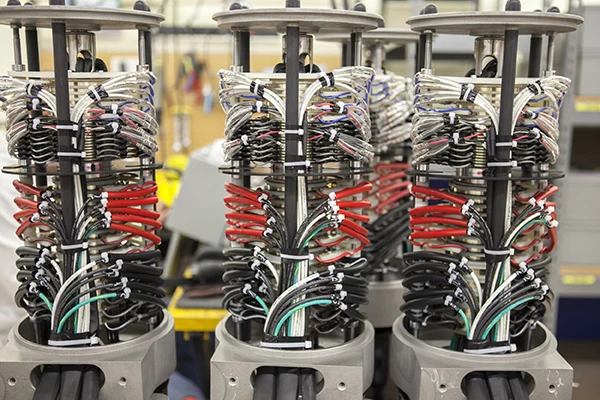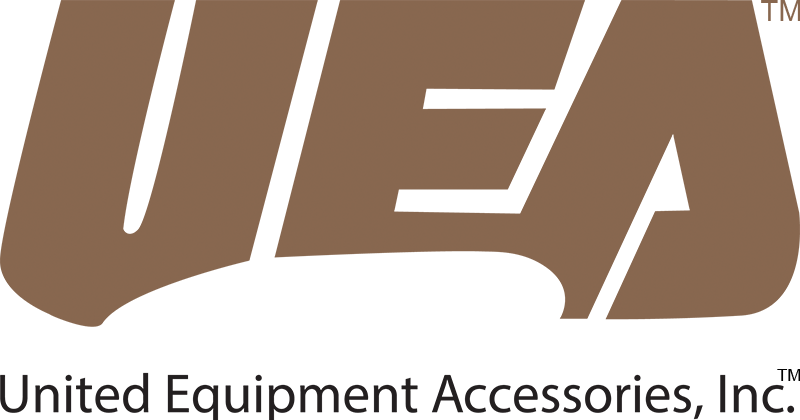This article originally appeared in Windpower Engineering & Development, April 24, 2018
-By Jesse Shearer
Engineering Manager
United Equipment Accessories, Inc.
A healthy wind turbine is a productive turbine, one that can improve a wind owner’s ROI. However, even the smallest components can impact a turbine’s overall efficiency if damaged or overworked. Proper maintenance and design of turbine components are vital to keeping a wind farm running reliably, and avoiding unscheduled repairs or costly replacements.

One small, but important component of every wind turbine is the slip ring, which is used for power and pitch control systems. Slip rings transfer power to motors in a turbine’s blades and share data back to the hub from sensors in the blades to optimize wind generation.
As wind turbines become more powerful, slip rings are upgraded and refined to work optimally in the harsh environment of a nacelle. A well-designed slip ring requires little maintenance and has a long lifespan. Given that a slip ring in a wind turbine may see 10 million revolutions or more per year, annual inspections and care are still necessary.
Here are a few ideas for extending slip-ring life in wind turbines.
Inspect visually
Predictive analytic platforms, which monitor and extract data for trending analysis, have garnered much attention in the wind industry. Such systems can provide valuable information about turbine performance, component fatigue, or expected production.
However, annual visual inspections should also be scheduled as part of a good maintenance plan. Sometimes a good set of eyes are all that’s needed to identify maintenance issues, such as worn out brushes that could cause electrical failure or damage. This step serves as an extra preventative measure to catch potential problems early on that may save time, costs, and downtime.
Remove dust
Wind turbines must withstand harsh conditions, including variations in blade rotation, temperature fluctuations, and contaminates such as dust. Dust removal is essential to keep slip rings in top form. This can be done during the annual visual inspection to save costs and time scheduling another trip up-tower.
It is typically fastest and easiest to eliminate dust using compressed air or a small vacuum system. Make sure the method used keeps dust particles away from power or signal transmission. Slip rings that are overly contaminated from dust or dirt can cause a loss of transmission or communication, so it is important to ensure component cleanliness.
Keep ‘em clean
Unfortunately, dust is merely one contaminant to keep in check when maintaining slip rings. Leaking oil and water can quickly compromise the efficiency of a slip ring and result in malfunction. Also, other contaminants such as sand, dirt, or even humidity can affect slip rings, depending on a turbine’s location.
It is critical to inspect slip rings and clean its enclosure at least once a year. Typically, brush dust removal is recommended for optimal performance and to minimize buildup of future contaminants. Check with the slip ring or turbine manufacturer for recommended maintenance tips.
Replace brushes
Brushes in turbines are are used as electrical contacts for power transmission. On slip rings, an electrical current or signal conducts through the brushes to make the connection. Worn brushes can cause damage, which can result in costly machine downtime.
Advanced designs can last up to 200 million revolutions, or an average of 10 years, depending on the number of hours the turbine is in operation and the speed of the turbine. However, it is important to monitor brushes and replace them prior to failure to prevent damage to the slip ring and a turbine shutting down. Many slip ring designs require full brush replacement, even if only one brush is worn down.
Consider quality when selecting brushes. For example, one brush design allows access to a slip ring’s enclosure and replacement of a single brush at a time, eliminating the need to change the whole section. These brush designs also work without lubrication, unlike some conventional designs.
Proper maintenance of wind-turbine slip rings will typically result in less downtime and fewer unscheduled maintenance trips, ultimately saving time and costs. Performing scheduled, routine component maintenance is a cost-effective long-term plan for a productive wind farm.
Safety first
An easy way to break a slip ring and ensure a costly replacement is by using it as a climbing aid or step during maintenance and inspection. This may seem self-evident, but the misuse of slip rings does happen fairly regularly at wind sites.
United Equipment Accessories includes a warning sticker noting that the component is not to be used as a climbing device, which it says has led to a decrease in the need to repair or replace its slip rings.
Read full article here.
